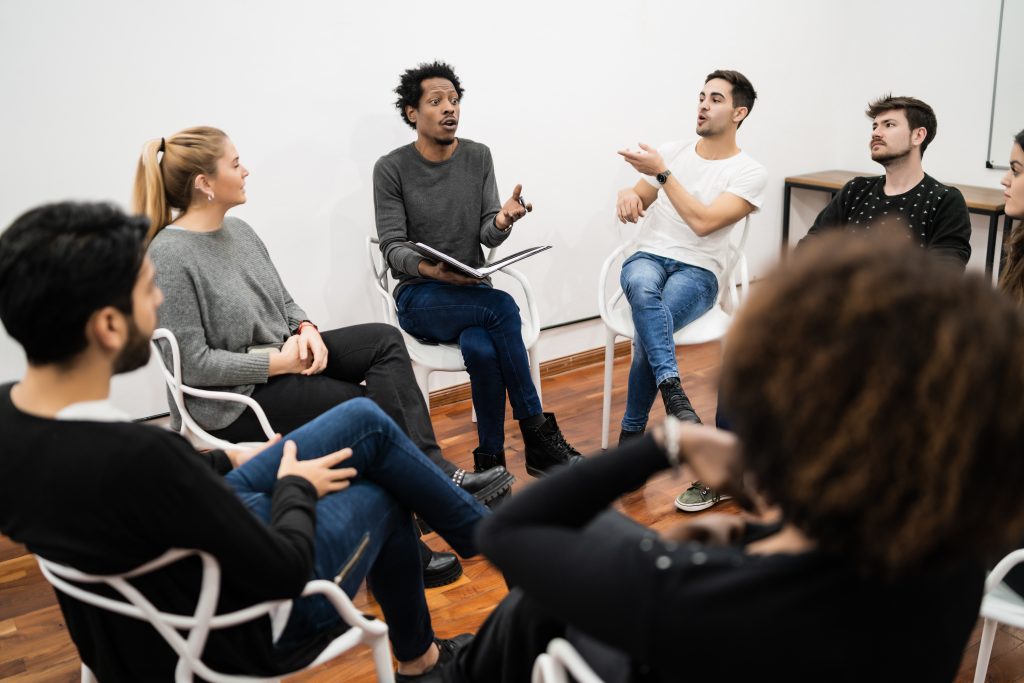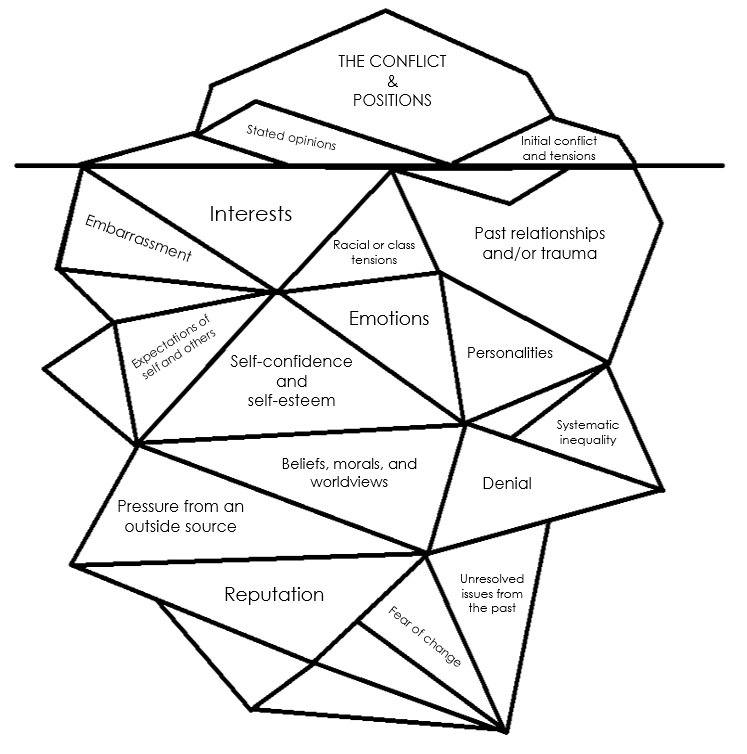Navigating Sensitive Topics

Read the following information, then complete the reflection activity below. Click NEXT to continue.

Tensions may occur during discussions related to “faith” and “rights”. Most of these tensions are due to human interpretations. Learning sessions are spaces for constructive dialogue in a dynamic process where tensions can be reduced with the help of clear methodologies, including preemptive situation analysis and evidence of positive results in areas of intersectionality between faith and rights. Consider the following:
“Hatred, discrimination, oppression, injustice, marginalization and extreme poverty: these are drivers of conflict, destruction and misery. All have common roots. The absence of justice. The absence of empathy and solidarity, which impel true care for all our fellow human beings. They also have common solutions: respect for the dignity, equality, and human rights of all.”
– Zeid Ra’ad Al Hussein
The 18 Faith for Rights modules will cover sensitive and sometimes difficult topics ranging from spirituality, morality, gender issues, and children. It is very likely the some of the participants in your session will feel strongly about many of these topics. Some participants may disagree on how to approach these sensitive issues. As a facilitator, you can prepare to navigate sensitive topics and help the participants within your session to find unity and peace, even when others may disagree with them.
This lesson will help you understand the basics of navigating those sensitive topics and resolving conflict if it arises.
The Conflict Iceberg: Understanding the Root of Conflict

It can be helpful to view conflict as an iceberg. Typically, if someone expresses they are upset or acts out, there are different levels of fear, frustration, and anger that have lead to that behavior. For example, a woman may express that she is angry or upset at the way someone in the group has expressed their opinions on gender equality and the role of women. The surface reaction is that she is angry and perhaps raises her voice. However, under the surface, she may be feeling hurt, misunderstood, embarrassed, or may be experiencing a traumatic memory. The visual above can help you understand that actions are often motivated by unseen emotions.
Understanding this concept will help you have greater empathy for your participants. As you learn about those ‘under the surface’ circumstances and emotions for each participant, you can be sensitive in avoiding certain topics or finding ways to help them feel safe during discussions and activities. Remember, you never know what an indiviual has experienced. Patience, kindness, and understanding are key in handling sensitive topics and conflicts.
Handling High Emotions
If emotions rise and participants in the group begin to fight or get upset with each other or you, it is important to know how to move forward and know how to adjust the situation. Here are a few tips that may help you handle potential stressful situations:
1. Ask questions
It can be difficult for a person who is passionate about their stance or opinion to properly express themselves. However, helping them and the group understand those ‘under the surface’ feelings and experiences can be extremely helpful in building trust and empathy amongst participants. You can do this by asking questions that help individuals better express their feelings. Some examples are:
- What is important to you?
- Why is this important to you?
- How does this topic affect you?
- It seems like this Module (activity, topic, etc.) is very important to you, can you help us understand why?
2. Reframe hurtful or strongly worded statements
When an individual feels threatened, unsafe, or upset, they may make accusatory statements out of fear or anger. You can learn how to reframe such statements and help de-escalate negative situations. Help participants avoid accusations and strong and divisive language. This can also be used as an opportunity to redirect the conversation toward more unifying topics. Here are some examples of reframing statements:
Original Statement
Reframed Statement
Marta says to a male participant during a discussion, “You must not understand anything about women. You have no idea what we have been through!”
“Marta, it sounds like you are very passionate about women’s rights and gender equality, and you have unique experiences which contribute to that. Would you mind sharing with the group so we can better understand your perspective?”
Henry say to another participant, “Homosexuality is a sin. The bible says so!”
“Henry, it is ok that we have different religious beliefs and you can disagree with others. However, we probably have more in common than we realize. This module is about recognizing and assisting minorities in a human rights context. What are some minority groups that you have observed not receiving equal treatment in human rights?”
3. Speak up
It may be necessary to politely and clearly, interrupt arguments if they arise. If you feel it is appropriate, speak up in a clear and loud voice asking individuals to remember the purpose of the Faith for Rights framework. Take control of the conversation and change the subject to a more unifying topic.
4. Take a break
If individuals are unable to calm down or handle their emotions, it may be necessary to pause for a break. You can ask participants to take a short break outside, get some water, or take some time taking deep breaths in separate rooms if they are available. Before bring them back together, be sure to clearly state your boundaries and expectations for civil and respectful behavior going forward.

Here are a few short simulations to think through. How would you handle each one? What tactic would you use to handle the situation? Record your responses and ideas you may have in your journal.
- Olaf has strong opinions about the LGBTQ+ community. He raises his voice as he states his confusion at different sexualities and orientations. How do you respond?
- Fatima and Malika begin to argue about children and human rights. They begin arguing differest parenting styles and Malika raises her voice. You try to intervene and redirect the conversation, but Fatima yells saying, "Stay out of it!" How do you respond?
- Justin and Rebecca are discussing gender equality. Rebecca says to Justin, "You aren't a woman, you can never understand how we feel." How do you respond?